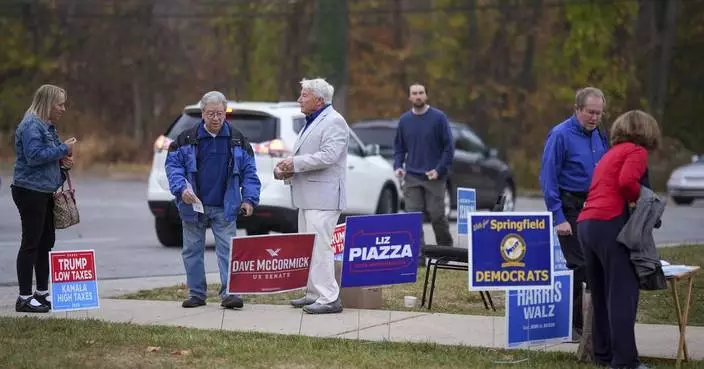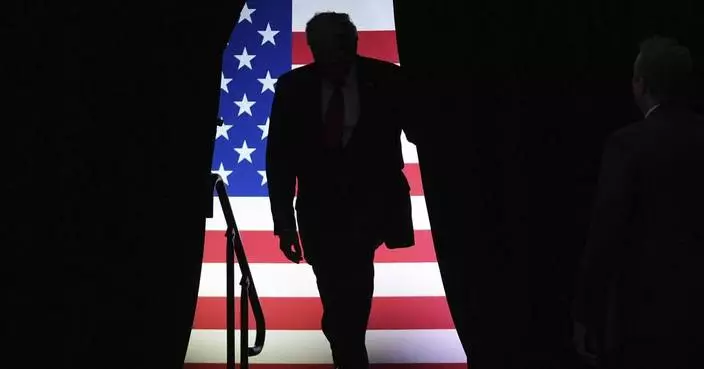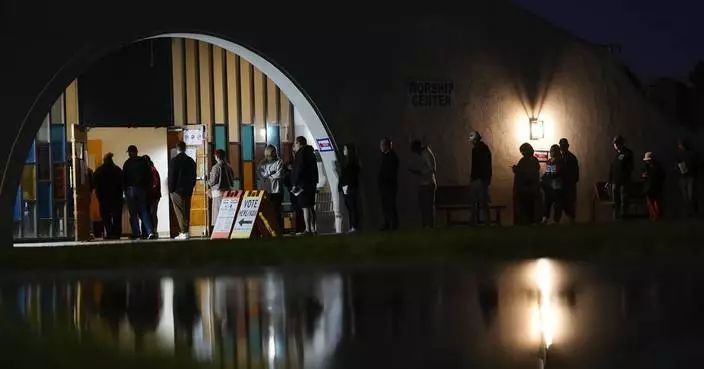WARSAW, Poland (AP) — Western security officials suspect Russian intelligence was behind a plot to put incendiary devices in packages on cargo planes headed to North America, including one that caught fire at a courier hub in Germany and another that ignited in a warehouse in England.
Poland said last month that it has arrested four people suspected to be linked to a foreign intelligence operation that carried out sabotage and is searching for two others. Lithuania's prosecutor general Nida Grunskiene said Tuesday there were an unspecified number of people detained in several countries, offering no elaboration.
The events come as Western officials say they are seeing an intensification of a hybrid war of sabotage by Russia targeting Ukraine’s allies, including election disinformation and arson attacks in Europe this year. Several officials said they believe the attacks were the work of Russian military intelligence, the GRU, although Moscow denied involvement.
Poland’s Internal Security Agency, or ABW, says that incidents in Poland, as well as other EU and NATO members, had intensified this year. ABW believes they are initiated and coordinated by the Russian special services. So far, 20 people have been charged in investigations led by the prosecutor’s office, the ABW and police.
Polish Prosecutor Katarzyna Calów-Jaszewska said the investigation focuses on foreign agents conducting acts of sabotage, including damaging industrial facilities or critical infrastructure such as airports, airplanes and other vehicles, and as well as arson using self-combustible parcels sent to EU countries and the U.K. that would ignite during road or air transport.
She added that the group tested a channel for sending such parcels to the United States and Canada.
The Wall Street Journal first reported the details of the cargo plane incidents.
The U.S. Transportation Security Administration said it has put extra security measures in place in recent months for certain cargo shipments heading to the United States.
“We continually adjust our security posture as appropriate and promptly share any and all relevant information with our industry partners, to include requirements and recommendations that help them reduce risk,” the TSA said.
Dirk Heinrichs, a spokesperson for DHL in Germany, said in an emailed statement to The Associated Press that the company could not provide details about the matter but was “fully cooperating with the relevant authorities to protect our people, our network and our customers’ shipments.”
The head of Britain’s domestic intelligence agency, MI5, said last month the U.K. is facing a “staggering rise” in attempts at assassination, sabotage and other crimes on its soil by Russia as well as Iran.
Calów-Jaszewska said Oct. 25 that parcels with camouflaged explosives were sent via cargo companies to EU countries and Britain to “test the transfer channel for such parcels” that were ultimately destined for the U.S. and Canada.
The incendiary devices in Germany and the U.K. both ignited in July.
One was at at stopover at a DHL logistics center at an airport in the city of Leipzig, according to Thomas Haldenwang, head of the German intelligence service. The German news agency dpa reported that the connecting flight containing the package, which came from one of the Baltic nations, was delayed in Leipzig and was on the ground when it ignited and set fire to a freight container.
British counterterrorism police are investigating whether Russian agents were behind an incendiary device in a parcel that caught fire in a DHL warehouse in Minworth, near Birmingham, in central England on July 22. The incident, first reported by the Guardian newspaper and German broadcasters, was similar to the one in Germany.
The Polish newspaper Gazeta Wyborcza also reported that a fire was reported in a courier truck near Warsaw.
“We are observing aggressive action by the Russian intelligence services. In particular Russian espionage and sabotage in Germany are on the rise, both quantitatively and qualitatively,” Haldenwang told the German Budestag, or parliament, last month while discussing the Leipzig incident.
“The activities of Russian intelligence services in the real world as well as in cyberspace show that Germany is the focus of this Russia’s hybrid war against Western democracies,” he added. “Russia is using its entire toolbox: from influencing political discussions within Germany to cyber attacks against critical infrastructure and sabotage. Russia’s willingness to use force proves that it is also willing to put human lives at risk.”
In a rare public speech setting out the major threats to the U.K., MI5 Director General Ken McCallum said “the GRU in particular is on a sustained mission to generate mayhem on British and European streets: We’ve seen arson, sabotage and more. Dangerous actions conducted with increasing recklessness.”
Kremlin spokesman Dmitry Peskov on Tuesday called media reports about the alleged sabotage plot an example of a “vague fabrication.”
Associated Press writers Jill Lawless and Danica Kirka in London, Dasha Litvinova in Tallinn, Estonia, Kirsten Grieshaber in Berlin, and Liudas Dapkus in Vilnius, Lithuania, contributed.

FILE - The logo of German fright company DHL is covered on a terminal at the airport Leipzig/Halle, Jan. 29, 2008. (AP Photo/Matthias Rietschel, File)

FILE - Thomas Haldenwang, head of the Federal Office for the Protection of the Constitution, poses for a photo after an interview with The Associated Press in Berlin, Germany, May 22, 2023. (AP Photo/Markus Schreiber), File
NEW YORK (AP) — U.S. stocks are rallying Tuesday as voters head to the polls on the last day of the presidential election and as more data piles up showing the economy remains solid.
The S&P 500 was up 1.2% in afternoon trading, rising closer to its record set last month. The Dow Jones Industrial Average was up 431 points, or 1%, as of 12:50 p.m. Eastern time, while the Nasdaq composite was 1.5% higher.
Treasury yields also rallied after a report showed growth for retailers, transportation companies and other businesses in the U.S. services industries accelerated last month. That was despite economists' expectations for a slowdown, and the Institute for Supply Management said it was the strongest growth since July 2022.
The strong data offered more hope that the U.S. economy will remain solid and avoid a long-feared recession following the worst inflation in generations.
Excitement about the artificial-intelligence boom also helped lift the stock market, as it has for much of the last year. Software company Palantir Technologies jumped 23% after delivering bigger profit and revenue than analysts expected for the latest quarter. It’s an industry known for thinking and talking big, and CEO Alexander Karp said, “We absolutely eviscerated this quarter, driven by unrelenting AI demand that won’t slow down.”
It helped offset a 6.3% drop for NXP Semiconductors. The Dutch company fell to one of the largest losses in the S&P 500 after warning that weakness it saw in the industrial and other markets during the latest quarter is spreading to Europe and the Americas.
The market's main event, though, is the election, even if the result may not be known for days, weeks or months as officials count all the votes. Such uncertainty could upset markets, along with an upcoming meeting by the Federal Reserve on interest rates later this week. The widespread expectation is for it to cut its main interest rate for a second straight time, as it widens its focus to keeping the job market solid in addition to getting inflation under control.
Despite all the uncertainty heading into the final day of voting, many professional investors suggest keeping the focus on the long term and what corporate profits will do over the next few years and a decade. The broad U.S. stock market has historically tended to rise regardless of which party wins the White House, even if each party's policies help and hurt different industries' profits underneath the surface.
Since 1945, the S&P 500 has risen in 73% of the years where a Democrat was president and 70% of the years when a Republican was the nation’s chief executive, according to Sam Stovall, chief investment strategist at CFRA.
The U.S. stock market has tended to rise more in magnitude when Democrats have been president, in part because a loss under George W. Bush’s term hurt the Republican’s average. Bush took over as the dot-com bubble was deflating and exited office when the 2008 global financial crisis and Great Recession were devastating markets.
Besides who will be president, other questions hanging over the market include whether the White House will be working with a unified Congress or one split by political parties, as well as whether the results will be contested.
The general hope among investors is often for split control of the U.S. government because that’s more likely to keep the status quo and avoid big changes that could drive the nation’s debt much, much higher.
As for a contested election, Wall Street has some precedent to look back to. In 2000, the S&P 500 dropped 5% in about five weeks after Election Day before Al Gore conceded to George W. Bush. That, though, also happened during the near-halving of the S&P 500 from March 2000 to October 2002 as the dot-com bubble deflated.
Four years ago, the S&P 500 rose the day after polls closed, even though a winner wasn’t clear yet. And it kept going higher even after former President Donald Trump refused to concede and challenged the results, creating plenty of uncertainty. A large part of that rally was due to excitement about the potential for a vaccine for COVID-19, which had just shut down the global economy.
The S&P 500 ended up rising 69.6% from that Election Day in 2020 through Monday, following President Joe Biden's win. It set its latest all-time high on Oct. 18, as the U.S. economy bounced back from the COVID-19 pandemic and managed to avoid a recession despite a jump in inflation.
In the prior four years, the S&P 500 rose 57.5% from Election Day 2016 through Election Day 2020, in part because of cuts to tax rates signed by Trump.
Investors have already made moves in anticipation of a win by either Trump or Vice President Kamala Harris. The value of the Mexican peso might fall if Trump's tariffs on Mexico come to fruition, for example.
But Paul Christopher, head of global investment strategy at Wells Fargo Investment Institute, suggests not getting caught up in the pre-election moves, or even those immediately after the polls close, “which we believe will face inevitable tempering, if not outright reversals, either before or after Inauguration Day.”
In the bond market, the yield on the 10-year Treasury rose to 4.34% following Tuesday morning's strong report on U.S services businesses from 4.29% late Monday.
In stock markets abroad, indexes were mixed in Europe and Asia. The moves were mostly modest outside of jumps of 2.3% in Shanghai and 2.1% in Hong Kong.
AP Business Writers Matt Ott, Alex Veiga and Elaine Kurtenbach contributed.
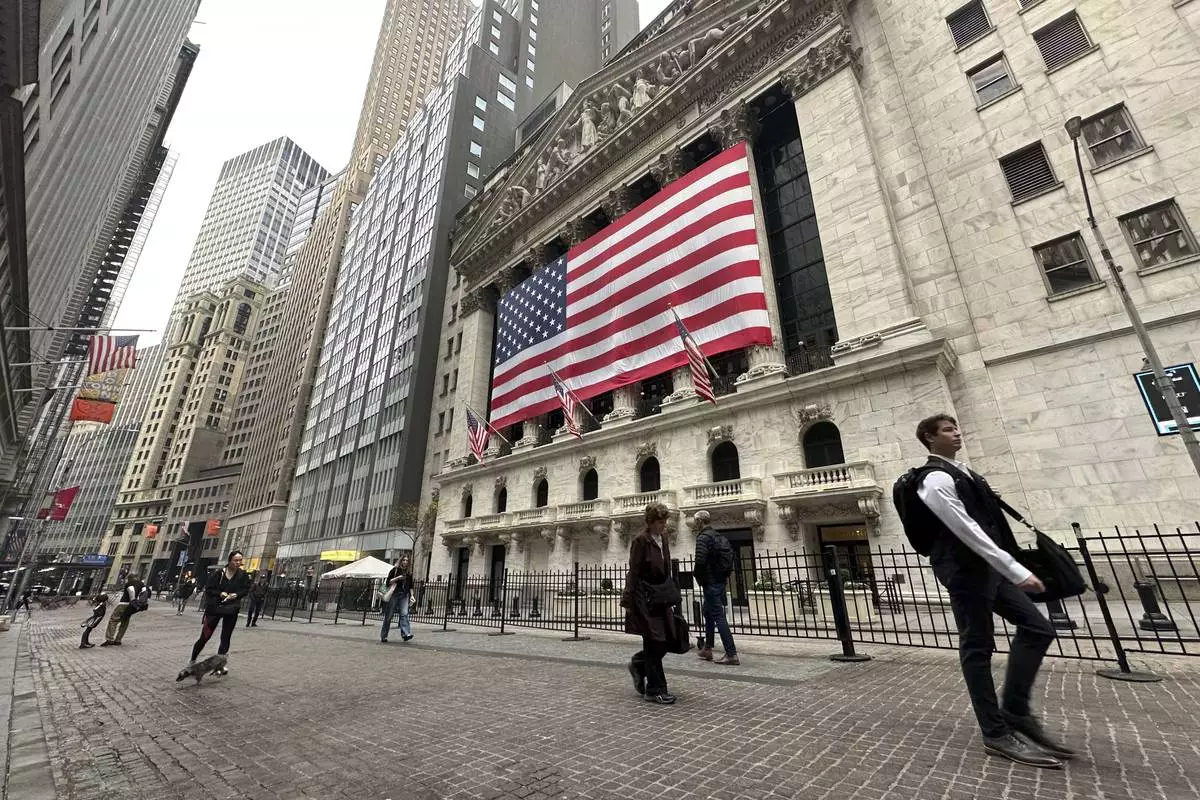
People pass the New York Stock Exchange in New York's Financial District on Tuesday, Nov. 5, 2024. (AP Photo/Peter Morgan)

The Fearless Girl statue stands in front of the New York Stock Exchange in New York's Financial District on Tuesday, Nov. 5, 2024. (AP Photo/Peter Morgan)
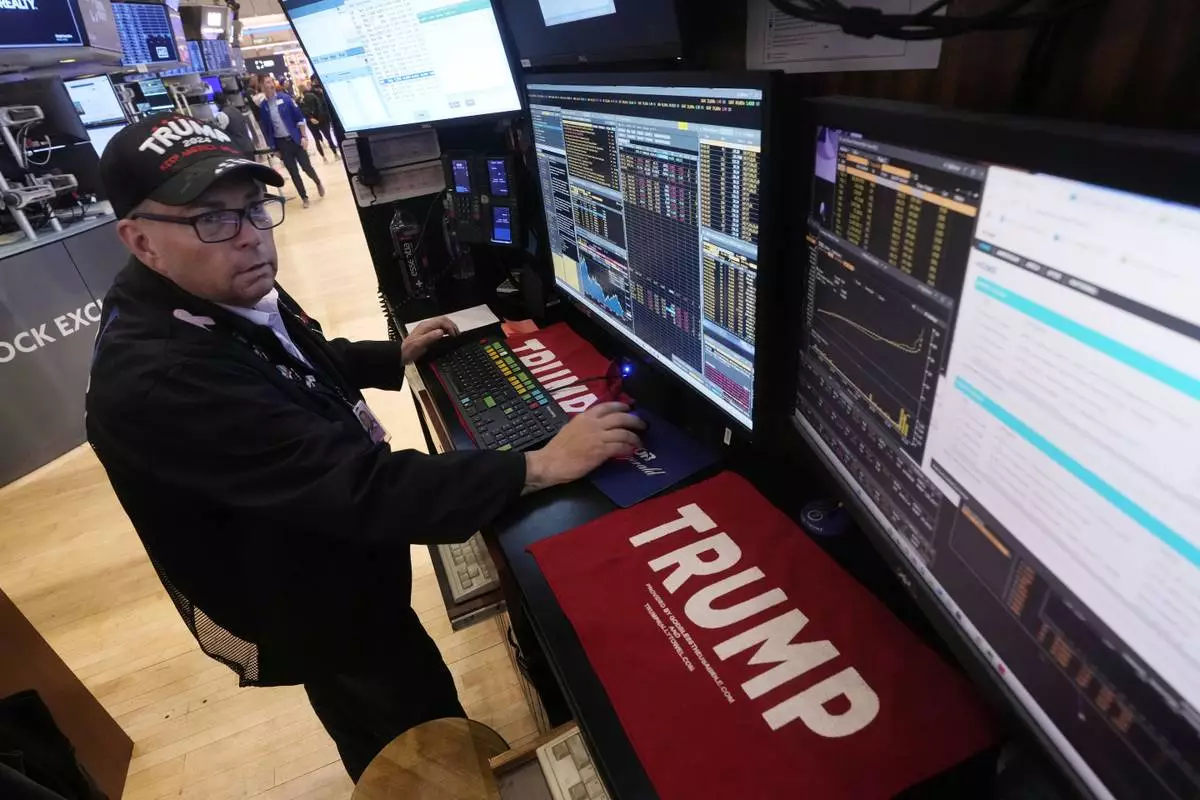
Trader Jonathan Mueller works on the floor of the New York Stock Exchange, Monday, Nov. 4, 2024. (AP Photo/Richard Drew)
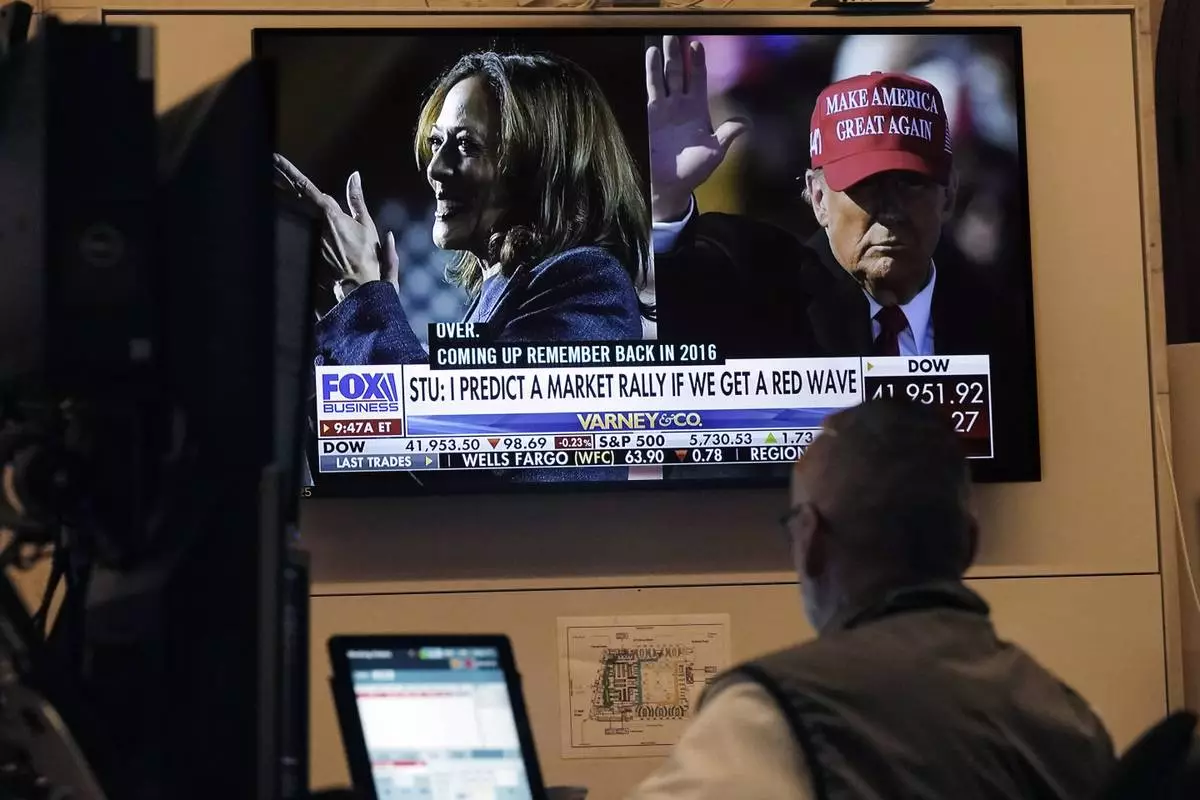
A screen on the floor of the New York Stock Exchange, Monday, Nov. 4, 2024 shows a broadcast talking about Kamala Harris and Donald Trump. (AP Photo/Richard Drew)
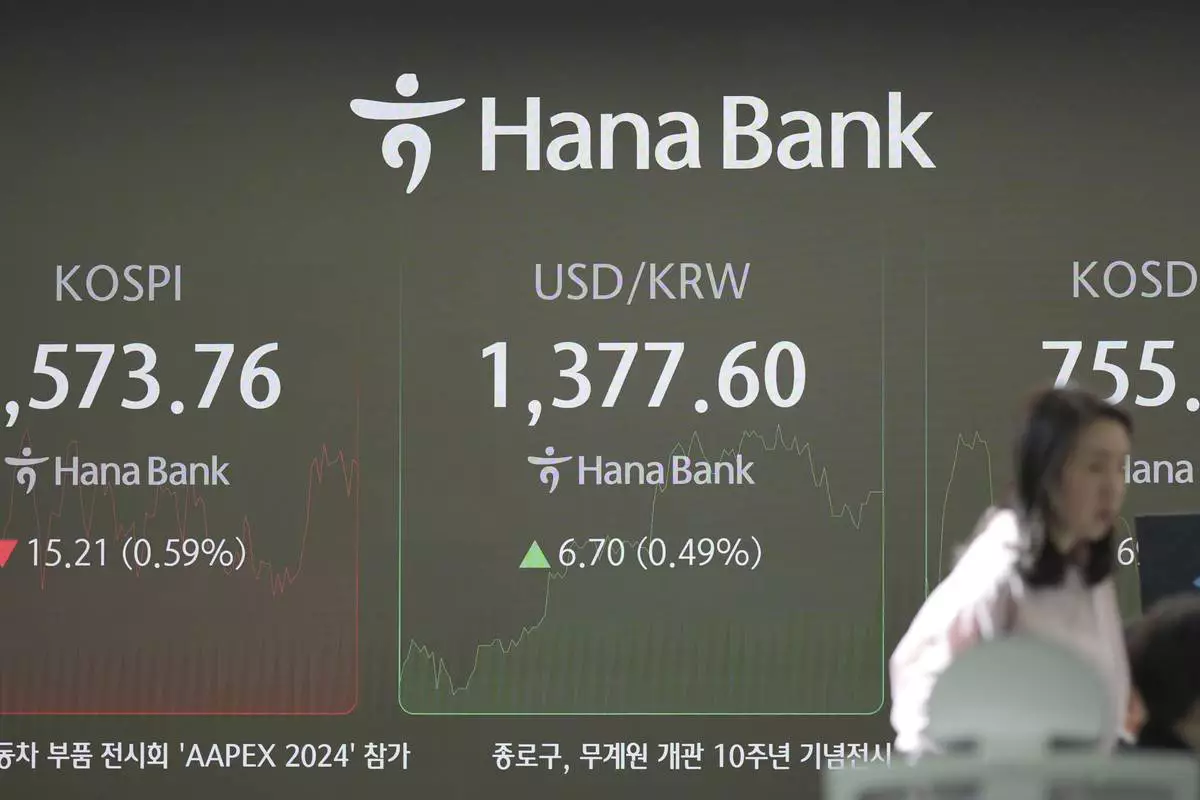
A currency trader stands near the screens showing the Korea Composite Stock Price Index (KOSPI), left, and the foreign exchange rate between U.S. dollar and South Korean won at a foreign exchange dealing room in Seoul, South Korea, Tuesday, Nov. 5, 2024. (AP Photo/Lee Jin-man)
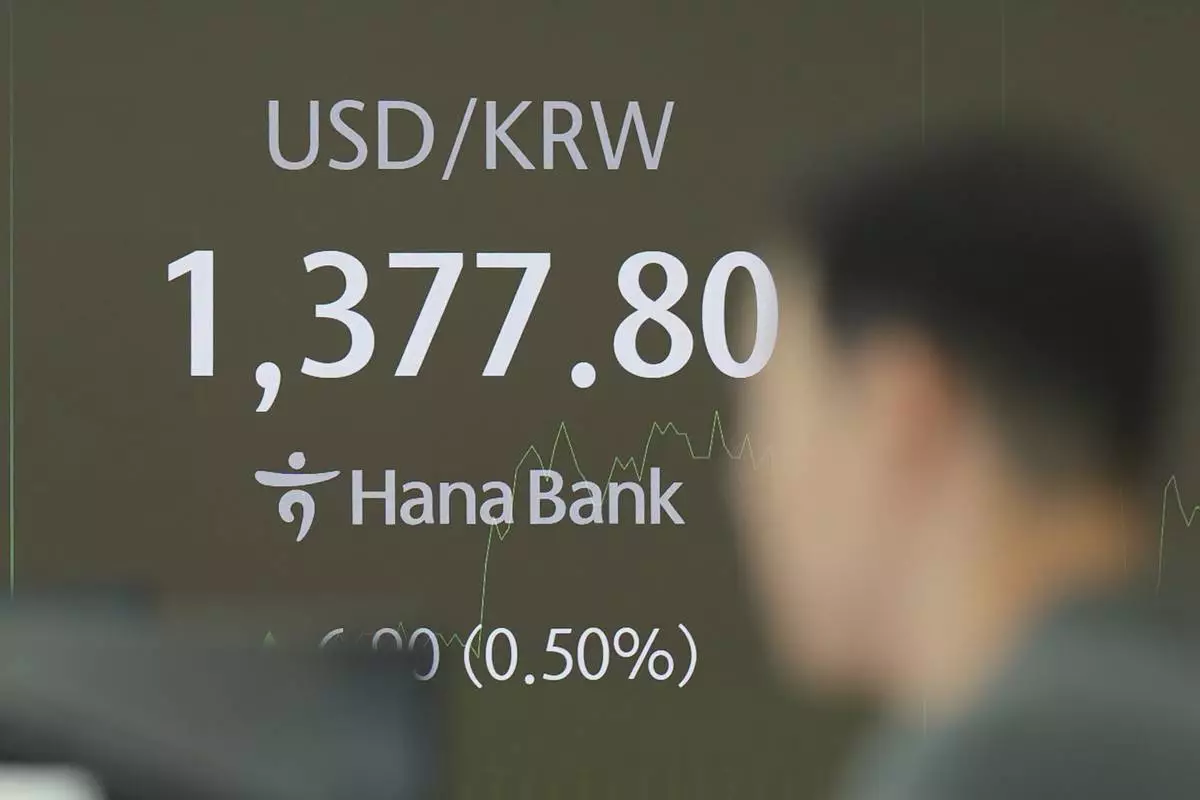
A currency trader walks by the screen showing the foreign exchange rate between U.S. dollar and South Korean won at a foreign exchange dealing room in Seoul, South Korea, Tuesday, Nov. 5, 2024. (AP Photo/Lee Jin-man)
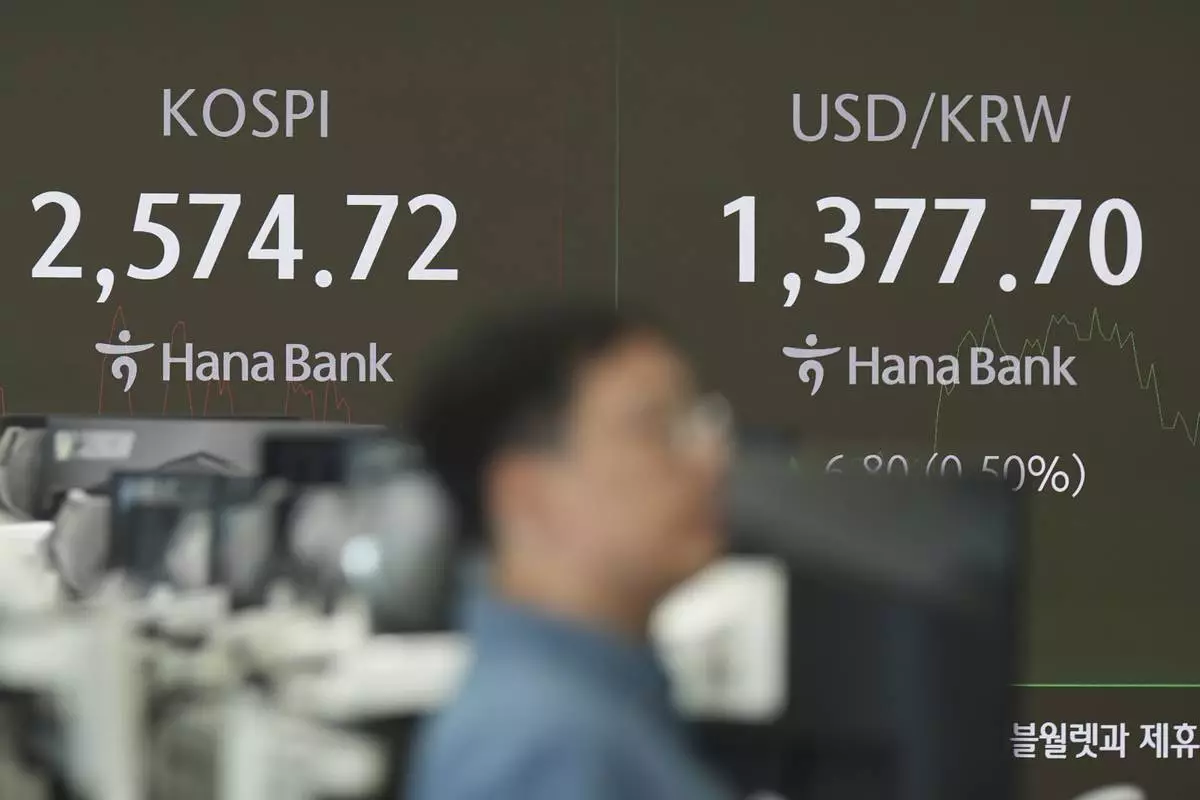
A currency trader walks by the screens showing the Korea Composite Stock Price Index (KOSPI), left, and the foreign exchange rate between U.S. dollar and South Korean won at a foreign exchange dealing room in Seoul, South Korea, Tuesday, Nov. 5, 2024. (AP Photo/Lee Jin-man)













